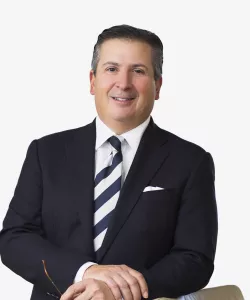Diffusing the ‘Nuclear’ Verdict Through Strategic Defense
Runaway verdicts against large corporations are on the rise. Recently, ExxonMobil was hit with a $725 million verdict in a single-plaintiff case when the jury found that the company failed to warn consumers about the potential health risks of benzene in its products.
The jury found that this failure was directly responsible for the plaintiff’s leukemia. The plaintiff claimed he was exposed to benzene as a gas station mechanic from 1975 to 1980.
This is just one of many sky-high verdicts recently awarded in plaintiff-friendly jurisdictions across the country. For example, a Pennsylvania jury handed down a $980 million verdict (including $180 million in compensatory damages) against Mitsubishi in October. By at least one account, verdicts in product liability cases have grown by 38% over the last year. Even more alarming is that these verdicts do not always arise in the context of punitive damages, which are intended to punish a party for malicious or gross negligence and, more importantly, deter future similar conduct. Instead, these near billion-dollar sums are supposedly intended to compensate the plaintiffs for their alleged pain, suffering, and economic losses, and are exponentially disproportionate to these injuries.
Nine-digit payouts — untethered to reality — seem to be the norm in our post-pandemic world. But companies don’t need to pull out their check books just yet. Companies can refocus litigation strategies to help mitigate the potential exposure with a refreshed and proactive approach to litigation defense that could help position the jury to issue verdicts that are fair and reasonable.
First, defendants should focus on keeping junk science out of the courtroom through Daubert motions (i.e., to preclude experts from testifying based on unproven science) and analogous state law and procedure. Most product liability cases turn on the reliability and credibility of the experts and, in many instances, prevailing on a Daubert motion leads inevitably to summary judgment. But even if these experts are permitted to testify, defendants can discredit them on cross-examination and rebut the plaintiff’s evidence through the direct examination of their own experts. Because junk science consists largely of simple, easily digestible, and facially plausible theories, defendants’ best bet at counteracting the effects of this testimony is to ensure their own experts’ testimony is equally accessible. This is especially important in the current climate of skepticism about science. Introducing expert testimony or other evidence centered around safety, testing, compliance, and reliable record-keeping will also go a long way toward building credibility with the jury.
Another strategy is to establish clear and simple defense themes, including alternative causes to the plaintiff’s injuries (even though it is generally not the defendant’s burden to do so). A plaintiff’s attorney focuses on emotions first, appealing to the jury’s primal fears and sympathy, and facts second. Defendants can combat this by appealing to the jury’s “common sense.” As much as jurors are susceptible to fear and sympathy, they won’t react well to the plaintiff’s attorney trying to pull the wool over their eyes on the facts. Although somewhat unconventional, defense attorneys might also consider proposing a counter value to the damages for the jury to consider only “if” liability is found. This may become necessary to ground the plaintiffs’ demands in a sense of reality.
Lastly, corporations and their outside counsel can help minimize inflated jury verdicts by lobbying for tort reform. Already, several states have taken up legislation that attempts to curb so-called nuclear verdicts, including measures to create transparency in litigation funding and cap damages under certain circumstances.
These are just a few of the ways ArentFox Schiff is working to mitigate the risks of runaway verdicts against clients. If you have any questions about what your company can do to help protect itself against supersized verdicts, please contact the authors or any member of the firm’s Consumer Products group.
Contacts
- Related Practices



